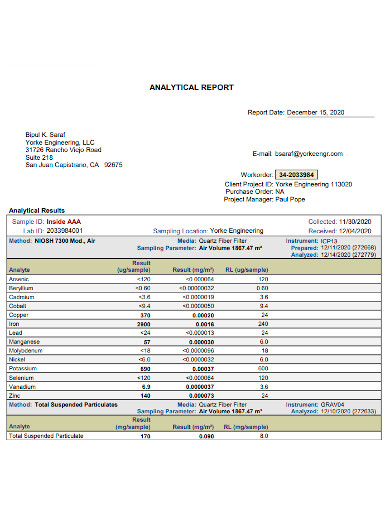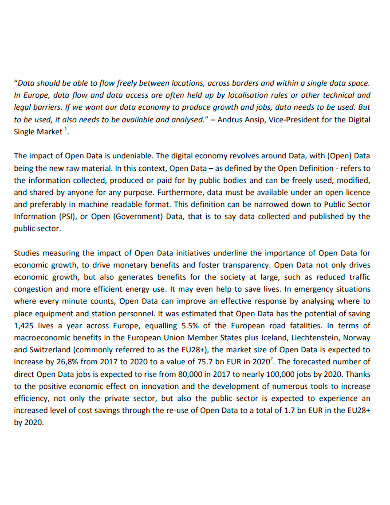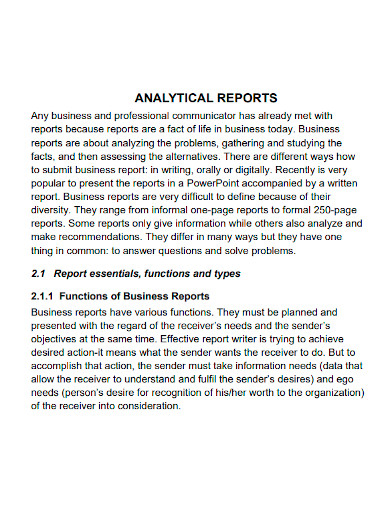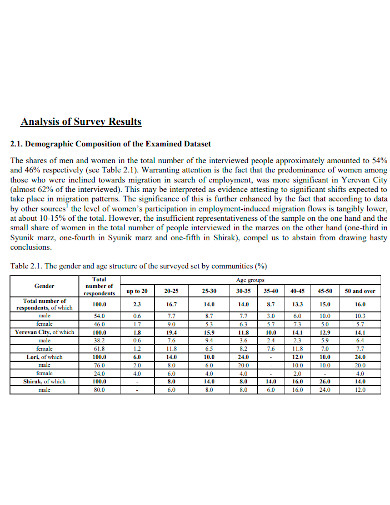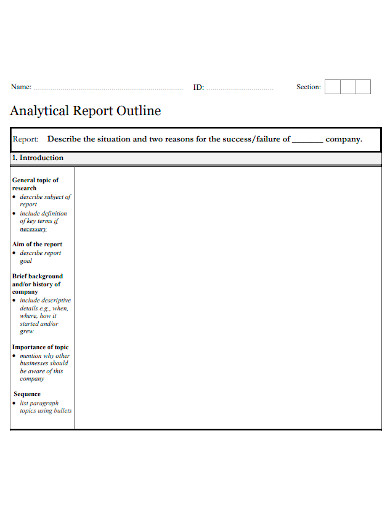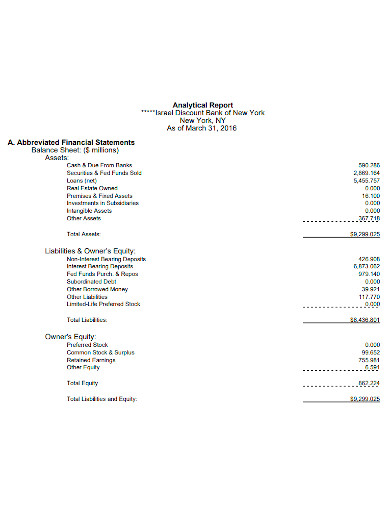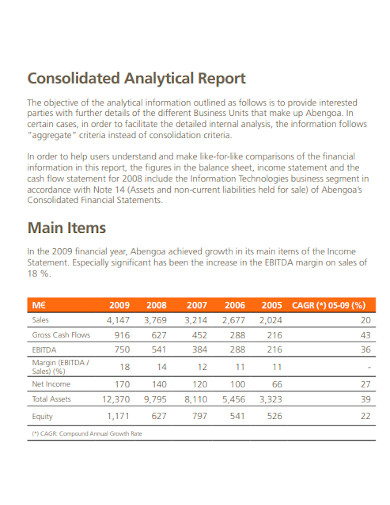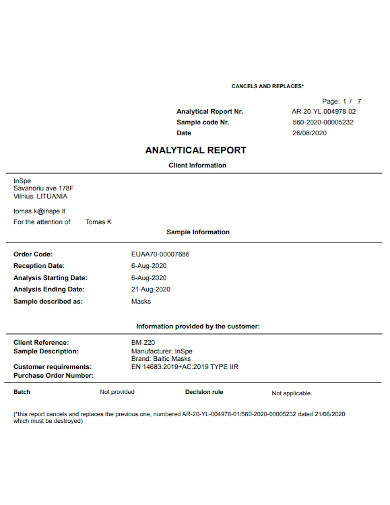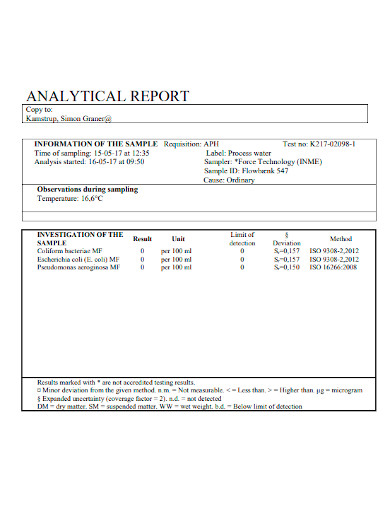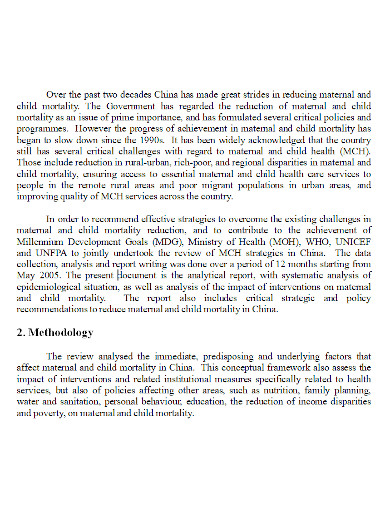Analytical reporting has become one of the most important parts of running a business or any institution that seeks improvement and growth and longevity. It is done for the purpose of making logical decisions instead of hastily jumping into the decision to carry out a strategy without knowing the basis of such a move and if such a move is even necessary. What are the parts of a good analytical report? What are the things needed to consider writing it? If you don’t know how to start, you can check out and get inspiration from our free Analytical Report Samples. Keep reading.
FREE 10+ Analytical Report Samples
1. Analytical Report Sample
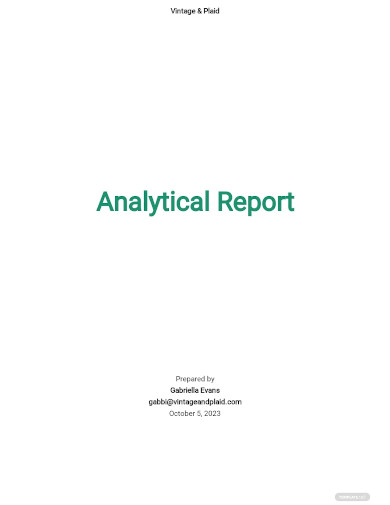
2. Client Project Analytical Report
3. Printable Analytical Report
4. Business Analytical Report
5. Survey Analytical Report
6. Analytical Report Outline
7. Bank Analytical Report
8. Consolidated Analytical Report
9. Editable Analytical Report
10. Lab Analytical Report
11. Professional Analytical Report
Contents of an Analytical Report
1. Problem Identification
Stating the problem is what steers the analytical report towards achieving its purpose because the problem is the main reason why analysis is carried out in the first place. It asks the question “why” and should be stated with an understanding of its root cause and the events taking place of its creation to become a concern or an issue. Problem identification also involves citing those who are greatly affected by it which includes but not limited to the executives and stockholders of the organization, the leaders of the concerned departments, or even ordinary employees whatever their positions might be.
2. Methods Used
Laying out and evaluating the methods of the analysis for the activity or undertaking is done or will be carried out is also a way to give the readers an idea of what to expect based on previous studies or activities that employed the same or a similar method. It is the factor that determines the success or failure of the goals you set as it comprises the step-by-step process of the strategies identified for the success of your goals.
3. Data Analysis
This part contains numerical or visual figures that represent the result of the methods you chose in order to give a solution to the problem at hand. It also helps if the figures are accompanied by written descriptions enough to explain vague parts and confusing representations of variables that result from among the methods used. By presenting the data in a manner that is comprehensive and easy to understand, it is at this part of the analytical report that success or failure is unofficially concluded and whether or not the methods used are effective or needs changes.
4. Formulate Recommendations
Providing recommendations to the organization’s strategies and methodology is also important in maintaining the success of its goals and performance objectives or to make improvements on one or many parts of the whole process that led to its failure. Nonetheless, even if the whole process has been victorious, shortcomings are still inevitable and need scrapping up. Recommendations might include, one way or another, the improvised version of the successful methods so that any loopholes in the future may be avoided as they can become the source of other concerns along the way.
FAQs
What does data accuracy mean?
It is one of the defining characteristics of data quality in which it is the measure of whether the data presented are correct against a known process and standard.
What does optimization mean?
It is the process of making the most out of an available resource or taking advantage of a situation in a way that is advantageous.
What is the meaning of facilitation?
Act of giving assistance to a process or activity in order to see its goals achieved.
An analysis of every undertaking should become a part of an organization’s regular activities in order to point out what must be done to avoid unforeseen problems and unfavorable results. There can be no perfect process but constant improvement takes away the complacency and gets you ahead of the game.
Related Posts
Sample Technical Reports
Sample Security Incident Reports
Trip Report Samples & Templates
Sample Book Report Templates
Sample Chemistry Lab Reports
School Accomplishment Report Samples & Templates
Field Report Samples & Templates
Sample Science Project Reports
Business Report Samples & Templates
Survey Reports Samples & Templates
Sample Feasibility Reports
Psychological Assessment Report Samples [ Clinical, Child, Intake ]
Report Format Samples & Templates
Acknowledgement for Internship Report Samples [ Hotel, Hospital, Teaching ]
Field Trip Report Samples [ Agriculture, Educational, Environmental ]

